Venomous snakes are slithering in SC again for spring. Here’s how to identify and avoid them all
Slither season is back.
Warmer spring weather has returned to South Carolina and that means the state’s snake population has become active once again. And snakes will basically stay active through the fall, according to the South Carolina Department of Natural Resources.
With people out and about enjoying the spring weather, chances are greater that some will run into one of the state’s scaly residents.
The SCDNR states that there are 38 species of snake in South Carolina, six of which are venomous. While that means the chances of coming across a venomous snake are lower, it’s probably a good idea to know how to identify them just in case.
Venomous South Carolina snakes
Copperhead: These are found in both wet and dry hardwood forests. They’re light brown to pinkish in color with darker, saddle-shaped crossbands. Markings are shaped like Hershey’s kisses from the side.
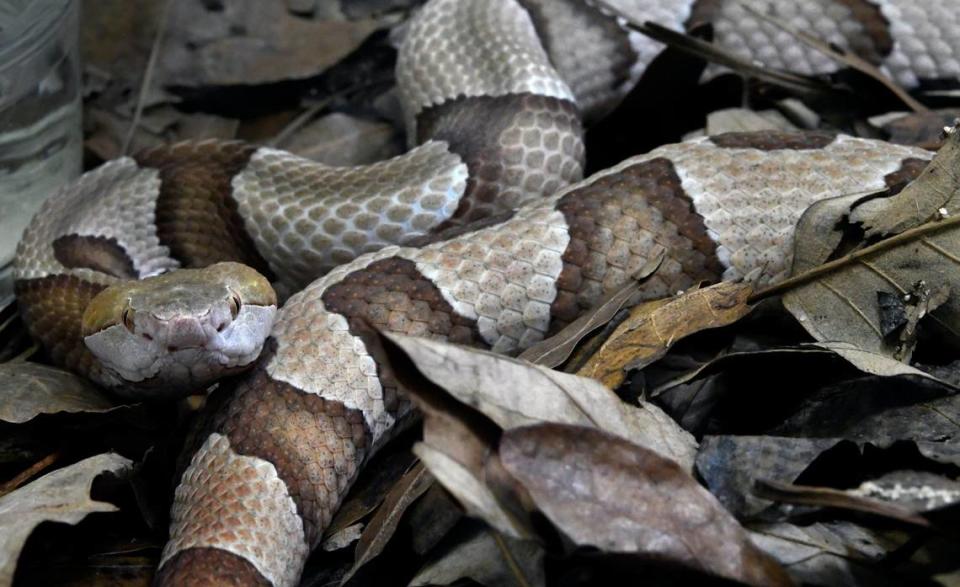
Cottonmouth: These are found in every type of wetland habitat but they travel across land in search of food. They can vary in color. Their backs may be brown or olive with darker crossbands. The belly is dull yellow and brown and the underside of the tail is usually black.
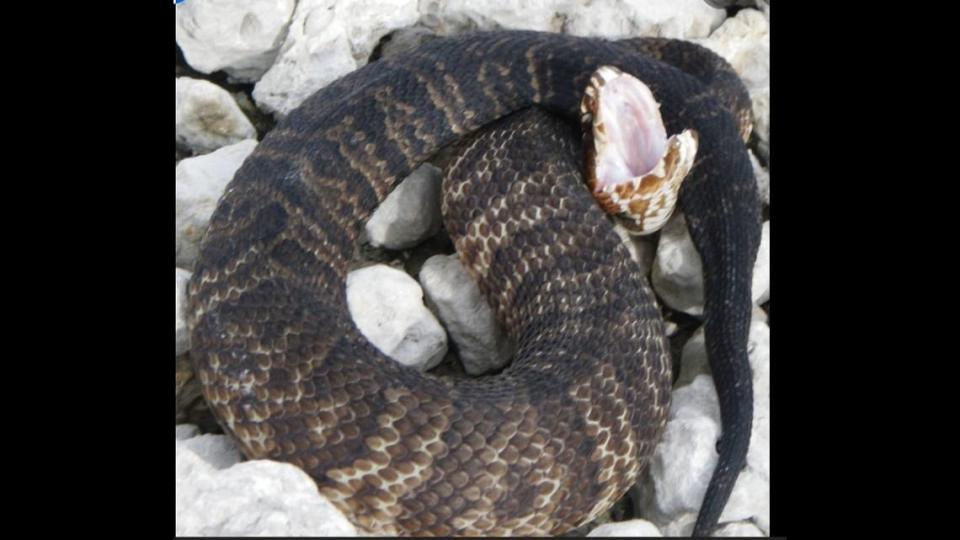
Eastern Diamondback Rattlesnake: These are found mostly in dry terrestrial habitats but also wet areas. Their basic color is light to dark with distinct diamonds of brown and yellow. The tail is banded and has rattles.
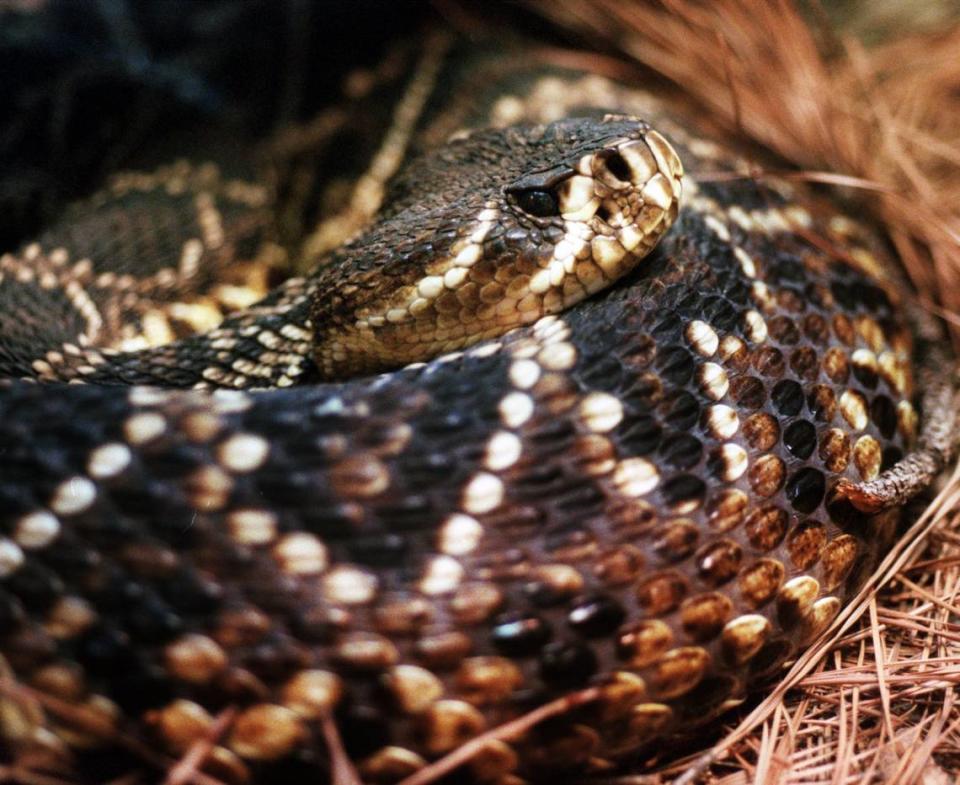
Timber/Canebrake Rattlesnake: They are found in a variety of terrestrial habitats as well as swamps. Their basic color is gray with black V-shaped crossbands. Some can have an orange-brown stripe down the middle of their back. The tail is black with rattles at the tip.
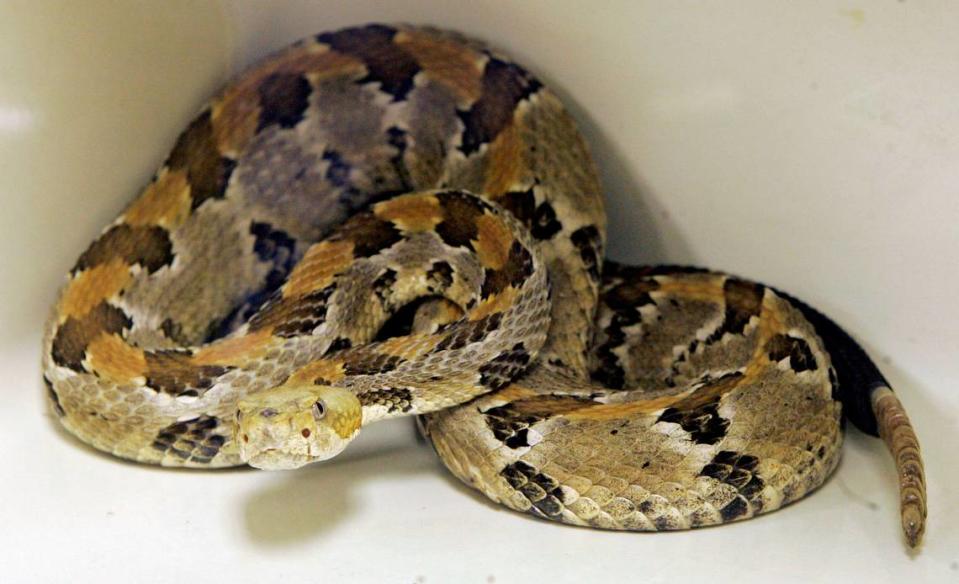
Pigmy Rattlesnake: They are found in wooded areas and swamps. They have dull gray with dark gray or brown blotches on the back and sides.
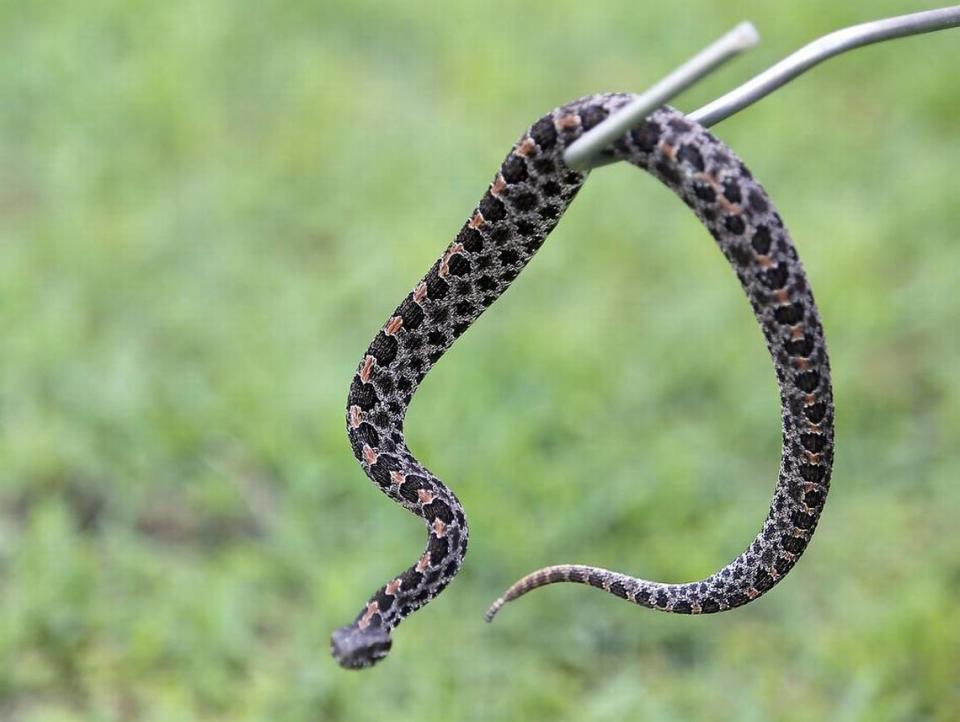
Eastern Coral Snake: These are found in a wide variety of habitats including wooded areas, fields and pond margins. They have red, yellow and black rings encircling their bodies.
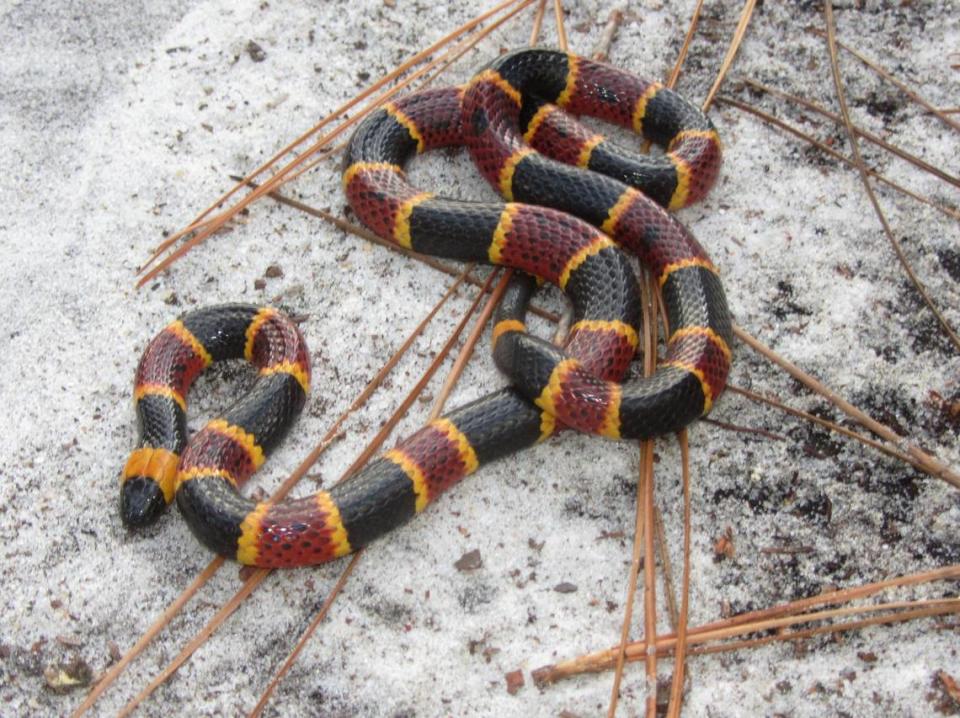
How to avoid snakes
The SCDNR states that snakes, even venomous ones, are nonaggressive when left alone. Even so, accidentally running into a venomous snake is always a possibility. Plus, it’s better to be safe than sorry and take steps to reduce the chances snakes will show up in your yard or home.
Here are some safety tips regarding venomous snakes.
Don’t ever place your hands, arms, feet or legs where you can’t seem them when you are outdoors. For instance, reaching under your house for something blindly could cause you to disturb a hiding snake.
While venomous snakes generally don’t strike when approached, they usually do when you grab them or pick them up.
Always wear closed shoes and long pants when walking through the woods or places where there are no clear views of where you are stepping.
Keep your yard tidy by clearing away undergrowth, toys, and tools that make great hiding places for snakes.
Keep walkways clear of brush, flowers and shrubs.
Clean up any spilled food, fruit or bird seed, which can attract rodents-and therefore snakes-to your yard.
Walk around logs instead of blinding stepping over them. Some snakes will hang around logs, looking for rodents to eat.
If your keep your boots or shoes in the garage or outside, check them before putting them on.
If you’re outside at night, definitely use a flashlight to see areas where venomous snakes might be present.
Try to remain calm if you do see a snake. Simply step back. Most snake encounters are just the animal moving to a different location.
Don’t try to remove a snake. If you see one on your property, just leave it alone.

